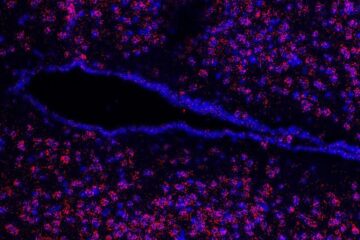Black holes and the dark sector explained by quantum gravity

This is a composite image of the Bullet Group showing galaxies, hot gas (shown in pink) and dark matter (indicated in blue). Credit: ESA / XMM-Newton / F. Gastaldello (INAF/IASF, Milano, Italy) / CFHTLS.
Questions such as how do we reconcile GR and Quantum Theory? What is Dark Matter? And what is Dark Energy? These are what keep most physicists awake late at night. Suggested solutions to these problems are manifold but all fall short of providing a satisfactory explanation.
The situation is set to change however as a new theory authored by Lic. Stuart Marongwe who holds a licentiate degree in physics and electronics from Jose Varona University in Havana, Cuba now stationed at the physics Department of McConnell College in Botswana, provides a self-consistent theory of Quantum Gravity which explains the Dark sector and is in agreement with observations.
The theory is known as Nexus in the sense that it provides a link between Quantum Theory and GR. This link manifests in the form of the Nexus graviton- a composite spin 2 particle of space-time which emerges naturally from the unification process.
One remarkable feature of the Nexus graviton which distinguishes it from the graviton hypothesized in the Standard Model is that it is not a messenger particle but rather it induces a constant rotational motion on any test particle embedded within its confines.
Moreover the Nexus graviton can also be considered as a globule of vacuum energy which can merge and de-merge with others in a process that resembles cytokineses in cell biology. The Nexus graviton is Dark Matter and constitutes space-time.
The emission of a graviton of least energy by a high energy graviton results in the expansion of the high energy graviton as it assumes a lower energy state. This process manifests as Dark Energy and takes place throughout space-time as the theory explains.
This paper is significant in the sense that it sheds some light on some of the most perplexing questions in physics which include a quantum description of Black Holes without singularities inherent in classical GR.The solutions provided in this paper will certainly open doors to new physics.
###
The paper can be found in International Journal of Geometric Methods in Modern Physics (IJGMMP).
Media Contact
All latest news from the category: Physics and Astronomy
This area deals with the fundamental laws and building blocks of nature and how they interact, the properties and the behavior of matter, and research into space and time and their structures.
innovations-report provides in-depth reports and articles on subjects such as astrophysics, laser technologies, nuclear, quantum, particle and solid-state physics, nanotechnologies, planetary research and findings (Mars, Venus) and developments related to the Hubble Telescope.
Newest articles

Roadmap to close the carbon cycle
A holistic approach to reach net-zero carbon emissions across the economy. A major approach to achieving net-zero carbon emissions relies on converting various parts of the economy, such as personal…

Cost-effective, high-capacity, and cyclable lithium-ion battery cathodes
Charge-recharge cycling of lithium-superrich iron oxide, a cost-effective and high-capacity cathode for new-generation lithium-ion batteries, can be greatly improved by doping with readily available mineral elements. The energy capacity and…

New regulator of eating behaviour identified
The rapidly escalating prevalence of overweight and obesity poses a significant medical challenge worldwide. In addition to people’s changing lifestyles, genetic factors also play a key role in the development…





















